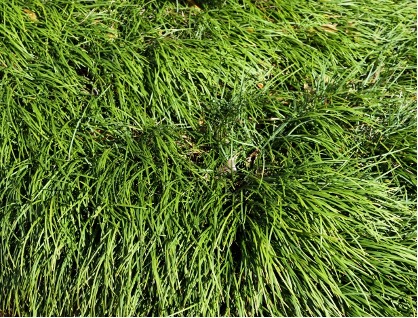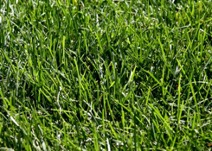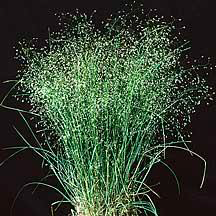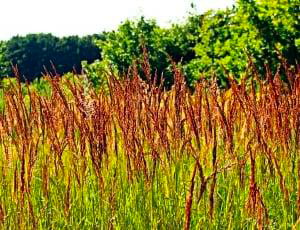Douglass Ranch Extinguisher
- Seana Nestegard
- Jul 13, 2023
- 3 min read
Vol. 1 Issue 8 | July 13, 2023
Fire Resistant Gardening Part 3 | Grasses: Friend or Foe?
Seana Nestegard | Firewise Committee

Hello Everyone! It's Summer!
As we continue part 3 of our fire resistant gardening series, the topic for this month is grasses.
Grasses are a touchy subject, especially since the Marshall fire was a grass fire. So, are grasses friend or foe? Statistically, there were 66,255 wildfires nationally in 2022 as documented by the National Interagency Fire Center (NIFC). Of those fires, the NIFC listed 61,429 as human-caused, grass wildfire events! In this case, it's not the chain saws that are the best defense but the brain. So, the question is, is grass safe to grow in your yard? The answer is: Yes! The key is maintenance.
As you are all aware, the Firewise Program focuses on educating residents to maintain
safety areas around the home. As a refresher, the HIZ or the home ignition zone is
divided into 3 areas:

Illustration provided courtesy of the Colorado State Forest Service. Used with Permission.
Immediate Zone - 0 to 5ft
Intermediate Zone - 5 to 30ft
Extended Zone - 30 to 100ft
During much of the summer months grasses can ignite and burn rapidly.
During much of the summer months grasses can ignite and burn rapidly. Tall grasses
will quickly carry fire to your home. So, keep these tips in mind.
Mow grasses to low height in the inner zones of the defensible space. The shortest mowed area closest to the house. The recommend maximum height is 8 inches. I keep my grass height at about 4 inches within the intermediate zone.
Mowing your lawn not only looks nice but it encourages grass to grow strong and healthy. It also gives you something to do!
I cannot stress enough the importance of how essential it is to maintain the grassy areas around your home. In fact, it's CRITICAL!
I cannot stress enough the importance of how essential it is to maintain the grassy areas around your home. In fact, it's CRITICAL!
Now that we know where these maintenance issue can lead, the next question is what types of grass can you plant in which they will grow healthy and thrive?
I am not going to lie. I am totally jealous of Veris’s yard! I have tried my gardening skills to obtain that kind of grass area to no avail. The best bet for growing grass in our climate and terrain are varieties that are native to our area.
Cool Season and Warm Season Grasses Defined.
There are two types of grasses: cool season and warm season.
Cool Season Grasses
These varieties are active in growth from mid-spring and stay green longer into the fall. On the flip side with these varieties without regular watering, they will go dormant in the heat of the summer. These grasses will tolerate a little shade, but will need at least half a day to three-quarters day of sun.
Cool grasses include: Wheatgrass, Needlegrass, Bromegrass, and Bluegrass. Cool
grasses grow with temps from 40º to 75º degrees. And because these varieties do not grow in heat, you can mow to the preferred height.
(Top left, Wheatgrass, Top Right, Needlegrass, Bottom Left, Bromerass, and, Bottom Right, Bluegrass)
Warm Season Grasses
These are varieties are in active growth at the start of late spring and go dormant in early to mid-fall. Although they are more tolerant to shade, however, the more sun the better.
Warm grasses include: Blue Gamma, Buffalo Grass, and Blue Stems. These
varieties are hearty and able to withstand drought conditions. You may ask can you plant these grasses together? The answer is, yes you can all season green!
(Left, Blue Gamma, Center, Buffalo Grass, and, Right, Blue Stem)
Ornamental Grass
Just for fun, you can put ornamental grass in containers! Even though you may not have a yard, you can still enjoy the some green on your deck o indoor planter. My daughter, who lives in an apartment, has a patch of grass that she has grown in a container. For high altitude, I've listed a few decorative grasses that not only may inspire design ideas for your landscape but also thrive in dry conditions:
(Top left, Indian Rice Grass, Top Right, Big Blue Stem Grass, Bottom Left, Big Oat Grass, Bottom Center, Little Blue Stem Grass, Bottom Right, Blue Bird Grass)
When planting ornamental grasses in a container things really open up! You control the moisture so you have many more options without the concern of drying up your well.
In closing, I encourage you to get out in the neighborhood and see what your neighbors are doing! What a great opportunity to collaborate and work together in maintaining a Firewise neighborhood!
Let’s all be Safe!
Seana Nestegard,
Firewise Committee





















This a great article, Seana. Thanks for the amazing education. I'll look forward to Veris sharing his secret on growing such a green lawn without the use of a sprinkler system. (this year is the exception of course...)